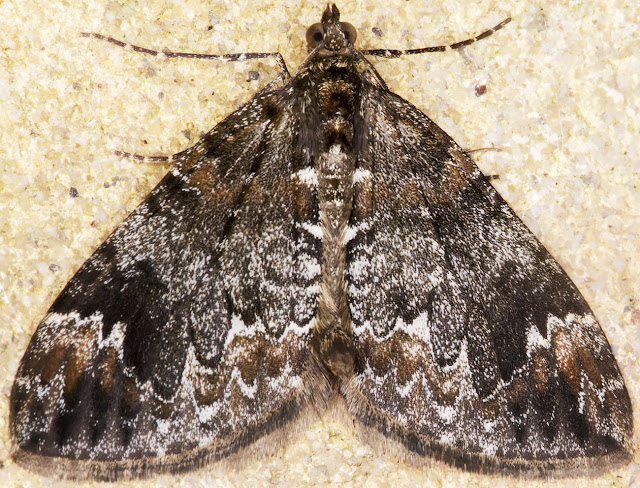 |
| Common Marbled Carpet, Dysstroma truncata. Luxford Lane, Crowborough, 26 September 2017. |
This is a Common Marbled Carpet. It's quite variable in colouration, but consistent as to shape and general markings. Some colours are identical to the related Dark Marbled Carpet and you need to look underneath the wings to tell them apart, but if they have the big orange-brown blotches shown by this one, the are always the Common species.
 |
| Common Marbled Carpet, Dysstroma truncata. Luxford Lane, Crowborough, 26 September 2017. |
Common again, but you need to look underneath to be sure.
 |
| Common Marbled Carpet, Dysstroma truncata. Luxford Lane, Crowborough, 26 September 2017. |
Yet another Common Marbled Carpet. Here's the underside:
 |
| Common Marbled Carpet, Dysstroma truncata. Luxford Lane, Crowborough, 26 September 2017. |
That dark line across the wings, although spiky, is more or less curved. If it were more angular, almost a right angle bend, this might be a Dark Marbled Carpet. Here's a specimen from a couple of years ago:
 |
| Dark Marbled Carpet, Dysstroma citrata. Hayes, Kent, 4 September 2014. |
And the underside:
 |
| Dark Marbled Carpet, Dysstroma citrata. Hayes, Kent, 4 September 2014. |
I think that's a pretty subtle difference and I am only 90 per cent sure that this one is a Dark! Examination of the genitals would be a sure method of identification, but I don't want to learn how to dissect moths. I always let them go.
Both these moths like to rest somewhere near the light, and rarely actually go into the trap.






No comments:
Post a Comment